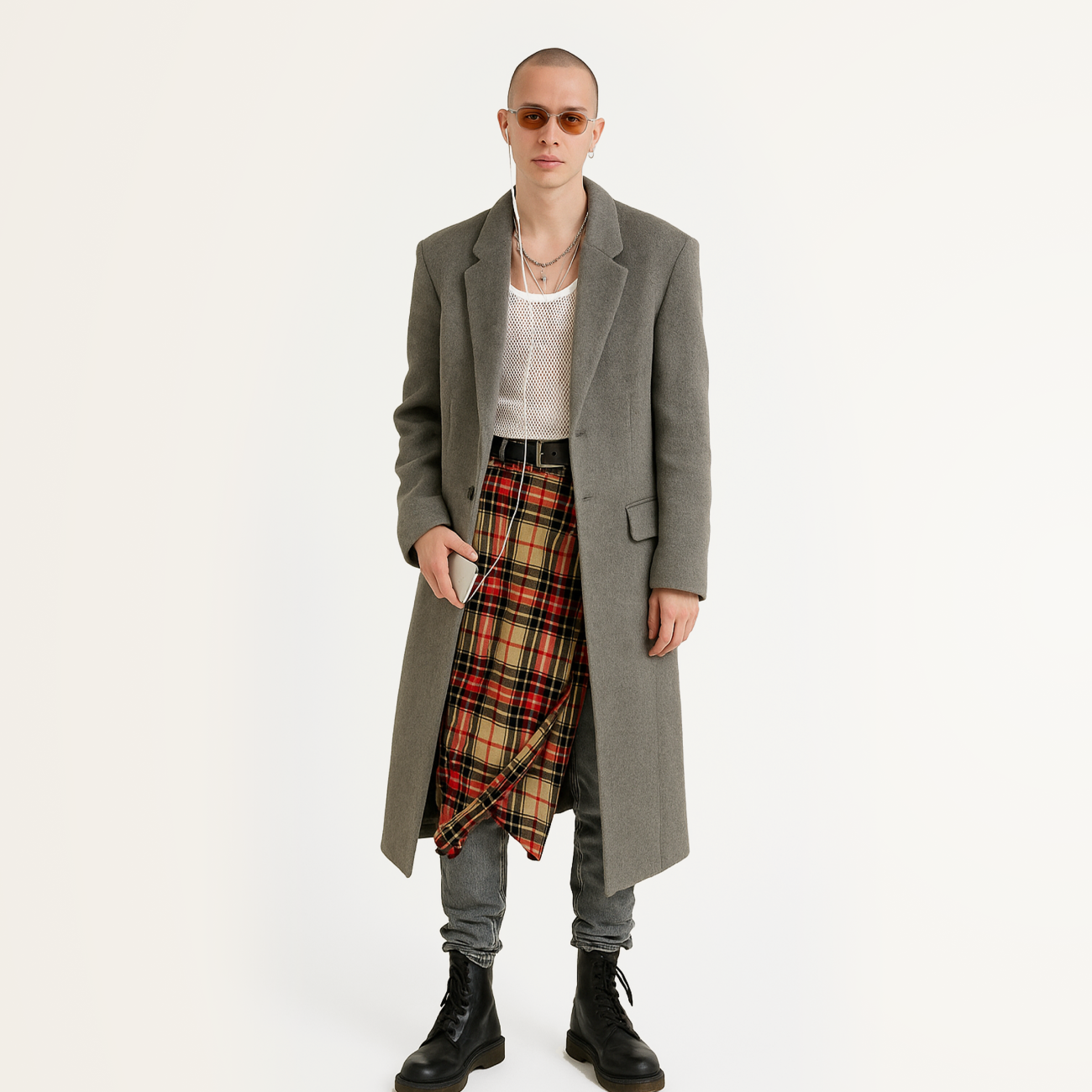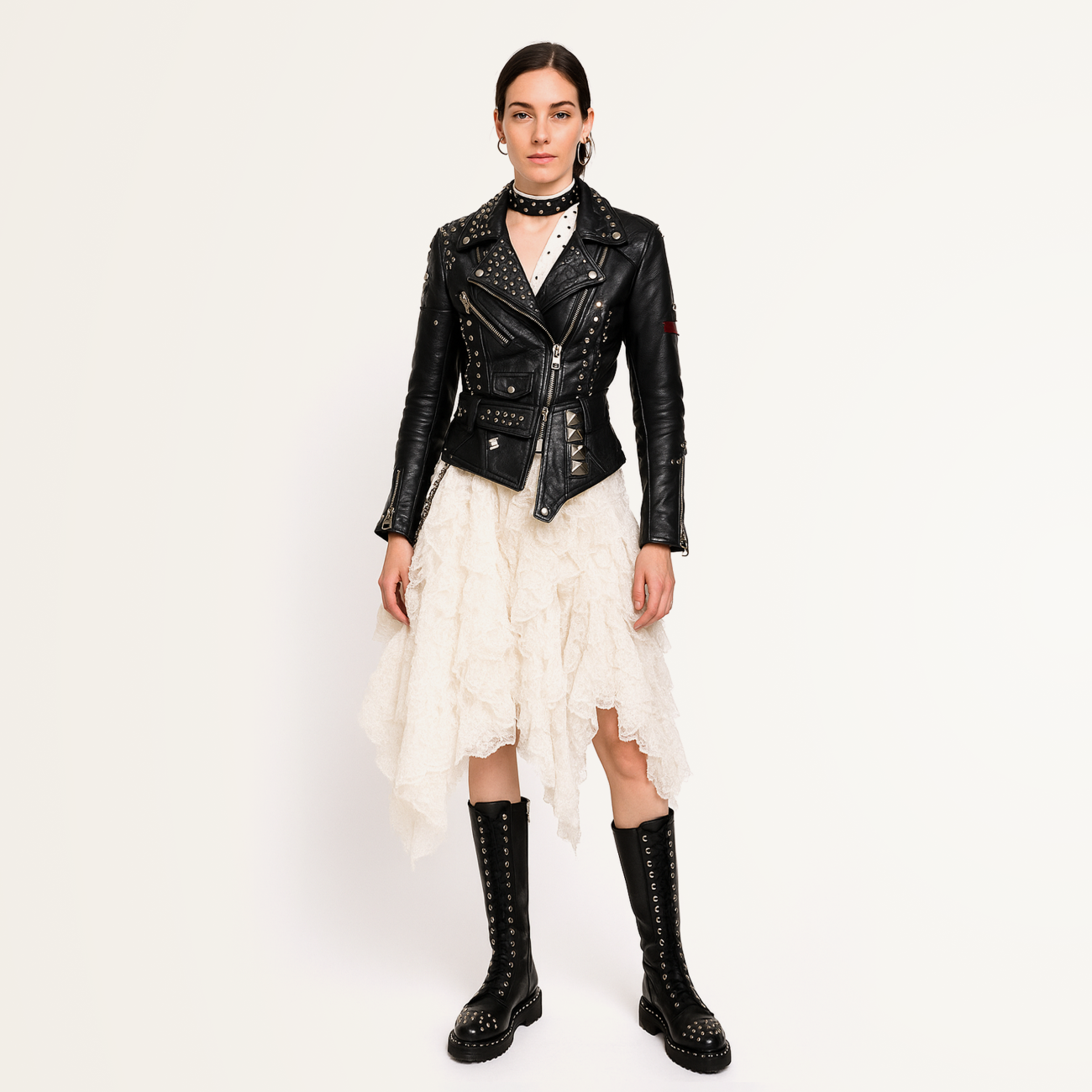Punk
Punk is not just a style — it’s a statement of protest, defiance, and freedom. Its philosophy is rooted in rebellion against social norms, rejection of conventions, and even a certain irony toward the fashion industry itself. Born out of disillusionment with societies governed by rules and control, punk emerged as a manifesto of anarchy and self-expression. It is a style that knows no fear of being misunderstood, because at its core lies a fierce desire for inner and outer freedom, untouched by the expectations of others.
History
Punk style originated in the UK in the mid-1970s as part of a subculture that embodied the disillusionment of youth. A social and economic crisis, rising unemployment, and a widening generational gap all fueled a spirit of rebellion. On the music scene, punk became a kind of catalyst; bands like the Sex Pistols, The Clash, and the Ramones not only promoted the idea of protest but also dictated a visual code that soon gained popularity beyond music. This style eventually permeated fashion and culture, inspiring both mainstream media and avant-garde designers — with Vivienne Westwood standing out as a vivid example.
Punk remains one of the most enduring and profound styles, carrying a philosophy that goes far beyond clothing and accessories. It is a way of life and a way of interacting with the world, where every piece in the wardrobe carries a message of freedom and independence.
Signature elements of the style
Color palette
The core colors are black, red, white, and khaki. Loud and vibrant hues, sometimes even neon, also found their place in the palette.
Prints
Punk style became famous for its bold prints — logos, anarchist symbols, flags, skulls, tattoo-inspired graphics, and provocative slogans referencing rebellion and freedom.
Textures
Rough, sometimes deliberately worn-out materials — leather, denim, mesh, latex, and studded metal hardware. The style embraces “imperfection” and authenticity, expressed through visible seams, tears, studs, and chains.
Cuts & silhouette
Asymmetrical and intentionally messy silhouettes — ripped sweaters, cropped tanks, short biker jackets, mini skirts, and pants with slits or inserts. Layering is also widely used to create voluminous and deliberately clashing looks.
Wardrobe essentials
- Biker jacket
- Printed T-shirts, often featuring protest slogans or bold statements
- Ripped jeans
- Leather pants and skirts
- Studded footwear
- Accessories: spiked bracelets, chains, chunky rings, and facial adornments like piercings and earrings
Substyles
- Glam Punk: A fusion of glamour and punk elements. Expect bright shades, metallics, and shiny materials. This style often features more sparkle and a more polished approach to makeup.
- Pop Punk: A softer, more playful version of punk style, inspired by the 2000s music scene with bands like Blink-182 and Green Day. The color palette is lighter and brighter, with an emphasis on jeans and comfy T-shirts.
Email: support@belt-app.com


















